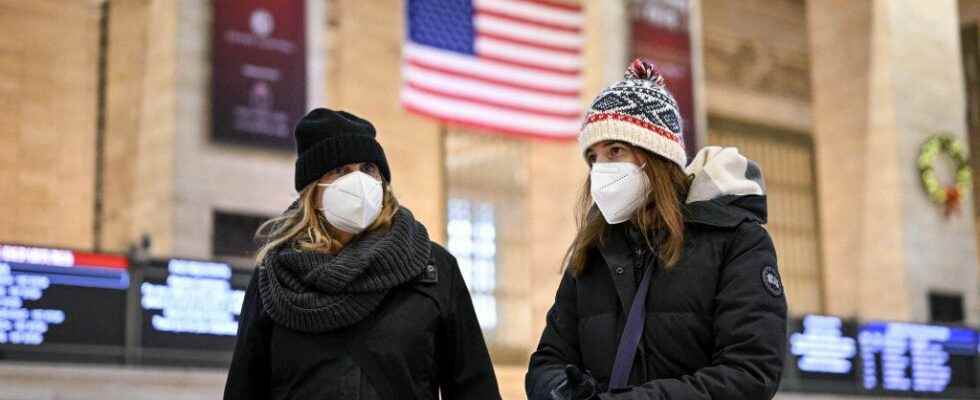While all eyes have so far been riveted on the health situation in China, where the number of contagions is exploding, the progression of a new sub-variant is now worrying in the United States. Called XBB.1.5, this newcomer to the Omicron group already represents more than 40.5% of contaminations in the country, whereas it was almost non-existent almost a month ago. based on data from the US Centers for Disease Control and Prevention.
The Omicron variant, which appeared at the end of 2021, gave rise to more than five hundred sub-variants which then themselves gave rise to several additional mutations. XBB.1.5 is one of them, it derives from the XBB subvariant. As the “X” indicates, XBB is a recombinant, ie an assembly of two already existing Omicron variants, in this case of BJ.1 and BM.1.1.1.
“Immune Escape”
On the way to becoming the majority in the United States, the sub-variant supplants the B.Q1.1 and BQ.1 strains currently dominant in France. Mutations in the virus give it immune escape properties that allow it to spread despite herd immunity acquired through vaccination and previous infections.
XBB.1.5 “manages to infect more easily people who already have immunity, therefore those who have already been infected or who have been vaccinated”, confirms on LCI Mircea Sofonea, epidemiologist at the University of Montpellier. “In addition, there is a suspicion of a gain in contagiousness for this sub-variant, which binds more easily to human cells”, continues the Inserm researcher.
A finding shared by the Chinese researcher, Yunlong Richard Cao, associate professor at Peking University, who explains on Twitter how the S486P mutation allows XBB.1.5 to better cling to the ACE2 receptor of human cells than XBB.1 .
No more dangerous than the others
XBB.1.5 is already present in France, but at a relatively low level. Only 15 cases have been identified so far in the samples that have been sequenced, indicates to Parisian Étienne Simon-Lorière, Head of the Evolutionary Genomics of RNA Viruses Unit at the Institut Pasteur. However, the first data on this sub-variant are for the moment rather reassuring and suggest that it would not cause more serious forms than the other strains of Omicron. However, this prediction is not definitive, herd immunity changing over time depending on the vaccination boosters carried out and the infections suffered.
“For the previous two winters, we have seen an upsurge in infections that peaked in mid-January…and I expect the same to happen this year,” explains to Reuters John Moore, professor of microbiology and immunology at Weill Cornell Medical College in New York. On the other hand, the difference between the last two years is that this time there has been no significant increase in mortality rates, the expert points out. Hospital admissions of Covid patients, however, started to rise again in the United States more than a month ago.
